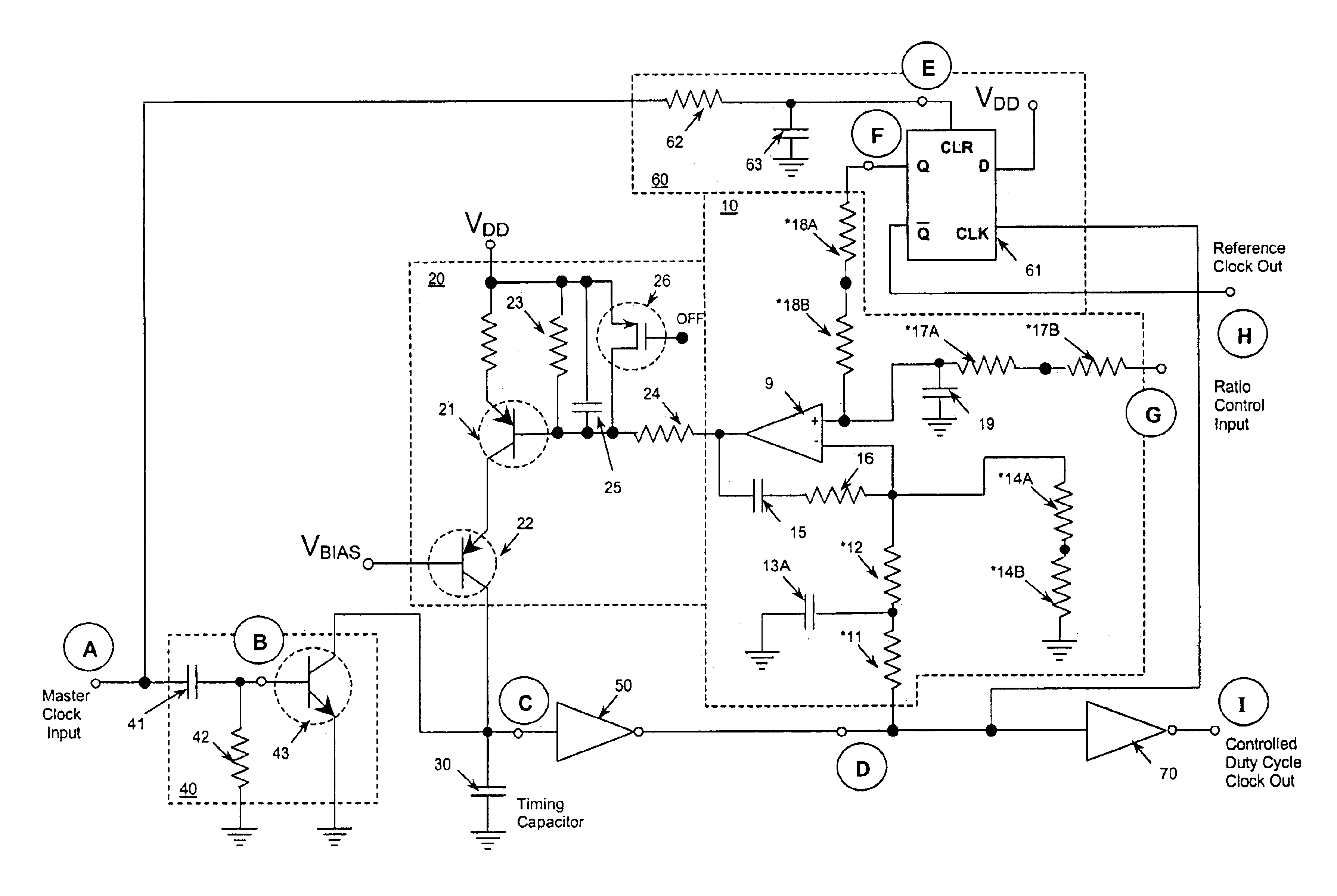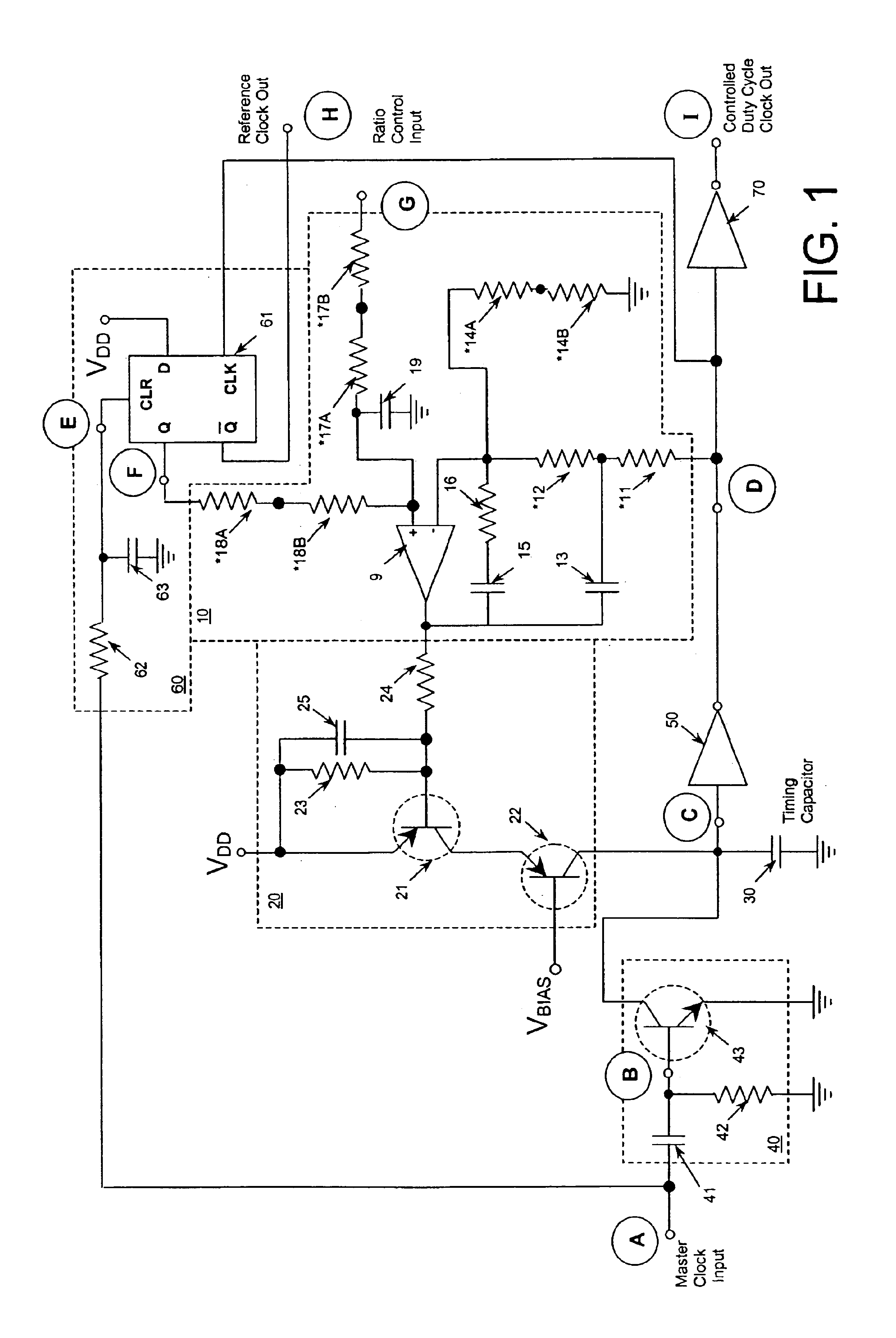Controller for generating a periodic signal with an adjustable duty cycle
a controller and duty cycle technology, applied in pulse generators, pulse manipulation, pulse widths, etc., can solve the problems of signal and input control voltage representing loop errors, affecting the operation of pulse widths, etc., to achieve the effect of reducing operating current, retaining stability and linear performance, and maintaining high precision
- Summary
- Abstract
- Description
- Claims
- Application Information
AI Technical Summary
Benefits of technology
Problems solved by technology
Method used
Image
Examples
Embodiment Construction
Throughout the appended drawings, the same reference numbers are used to designate the same or similar components.
Reference is made first to FIG. 1 for a description of the basic circuit structure and function for the present invention. FIG. 1 illustrates the arrangement of a pulse width controlled duty cycle generator according to the present invention. The basic elements of the circuit include integrator 10, voltage controlled current source 20, capacitor 30, reset switch 40, invert gate 50, reference pulse generator 60, and output clock buffer 70. During normal operation, while this circuit is providing controlled width output pulses at nodes D and I, the inputs presented to integrator 10 are sufficient to ensure that its output voltage keeps voltage controlled current source 20 properly biased and capable of supplying some level of output current to timing capacitor 30.
Reset switch 40 is composed of a high frequency NPN transistor 43 (such as an AT-30533 HP device), that is brie...
PUM
 Login to View More
Login to View More Abstract
Description
Claims
Application Information
 Login to View More
Login to View More - R&D
- Intellectual Property
- Life Sciences
- Materials
- Tech Scout
- Unparalleled Data Quality
- Higher Quality Content
- 60% Fewer Hallucinations
Browse by: Latest US Patents, China's latest patents, Technical Efficacy Thesaurus, Application Domain, Technology Topic, Popular Technical Reports.
© 2025 PatSnap. All rights reserved.Legal|Privacy policy|Modern Slavery Act Transparency Statement|Sitemap|About US| Contact US: help@patsnap.com



